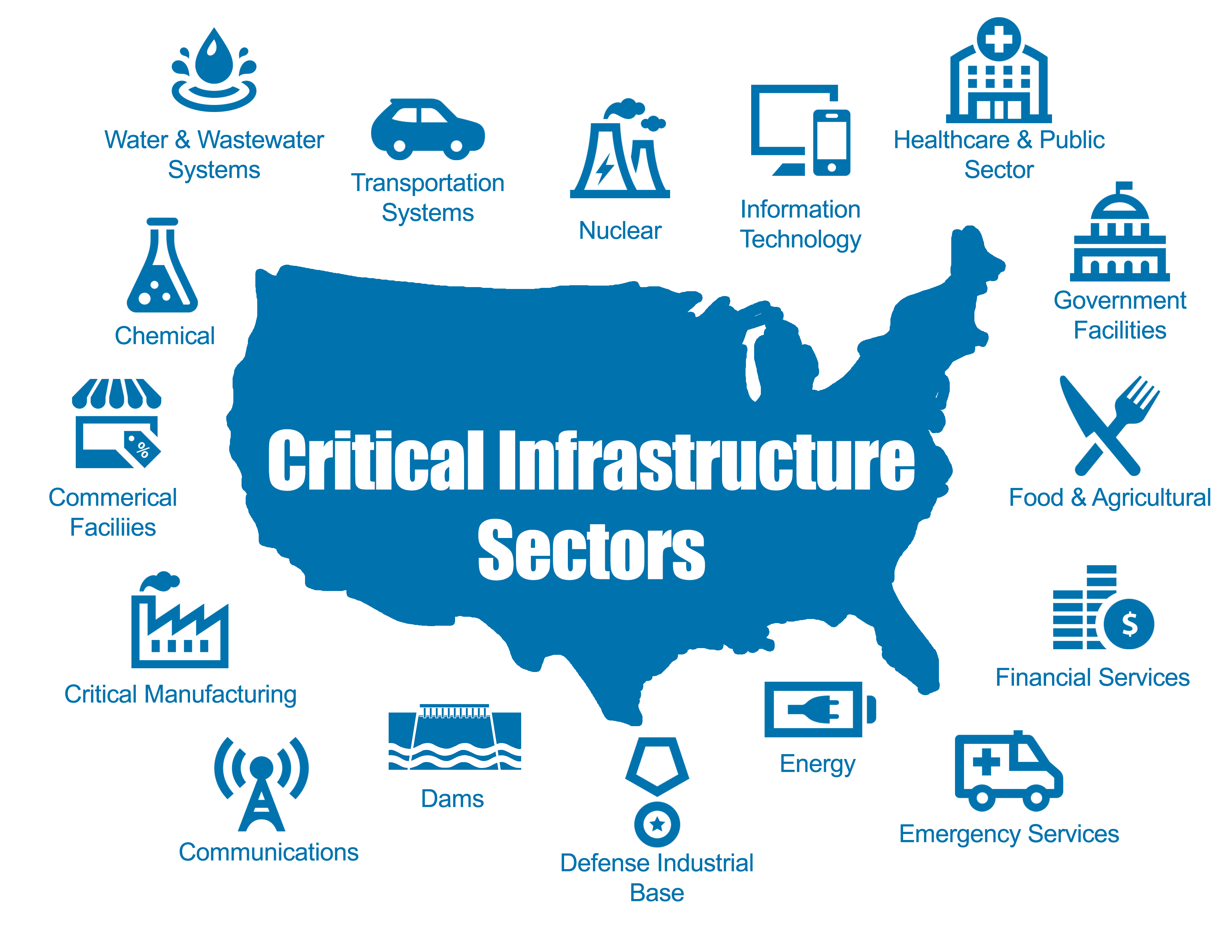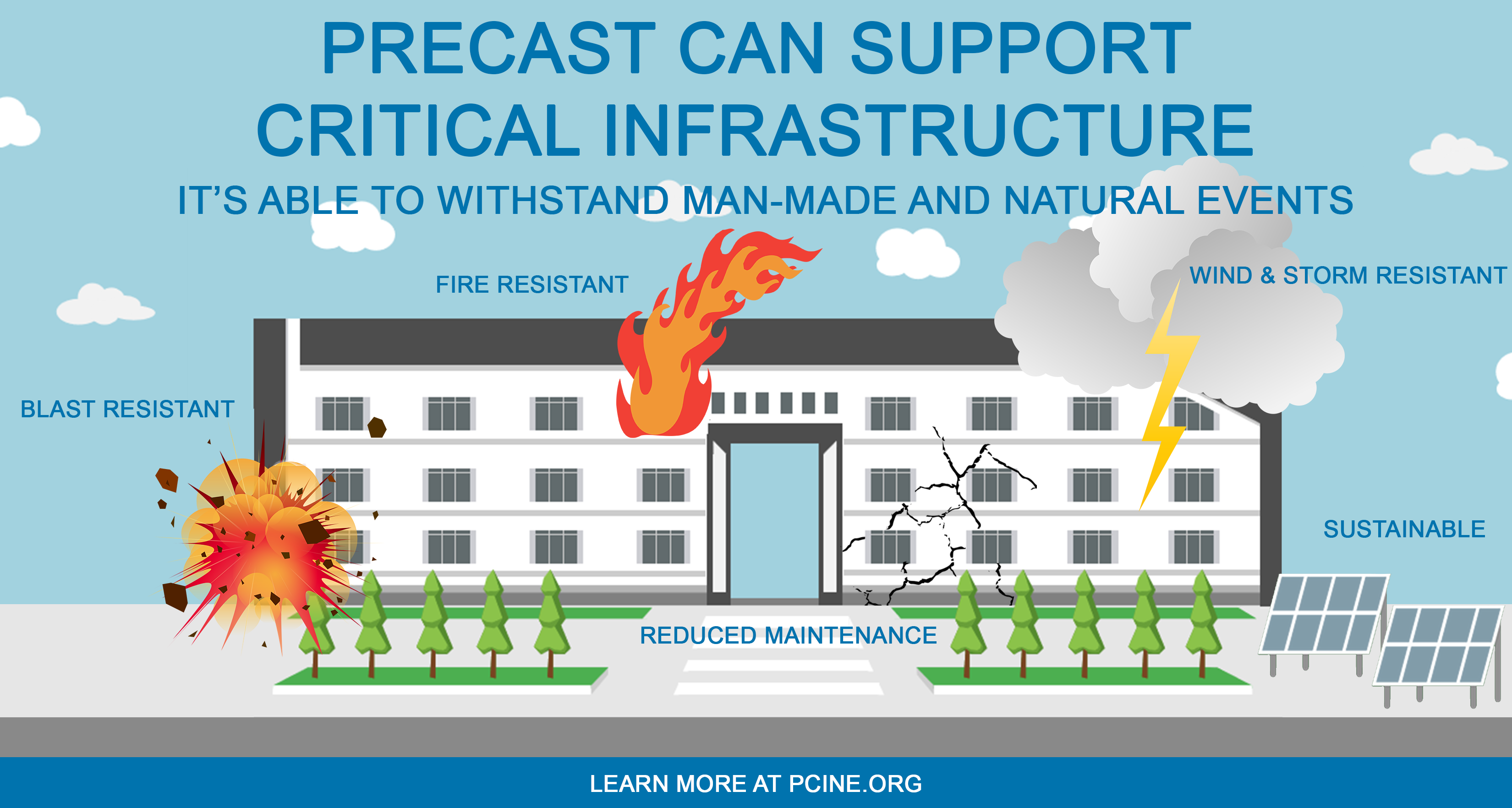Protecting a country as vast as the United States, along with the 330 million people who live here, is a daunting task that is never finished. Threats come daily in the form of natural disasters, terroristic actions and health concerns. Regardless of whether the threat is physical or virtual, precast concrete plays a critical role in fortifying our nation against threats both foreign and domestic.
Critical Infrastructure
The United States boasts a complex array of critical infrastructure sectors whose purpose is to ensure that our nation functions effectively and that our citizens are protected. The assets, systems, and networks that are in place fall under Presidential Policy Directive 21 (PPD-21) and cover national economic safety, as well as national public health and safety. Significant national resources are invested in the continued advancement and betterment of these sectors.

There are 16 infrastructure sectors that have been identified as critical and fall under PPD-21. These sectors are deemed so important that the incapacitation or destruction of any part of the sector would have a debilitating effect on national security in one form or another. The sixteen sectors are:
-
Chemical Sector: responsible for the conversion of raw materials into over 70,000 products essential for life.
- Commercial Facilities Sector: responsible for a diverse array of sites that draw large amounts of people such as business complexes, shopping/entertainment areas and lodging.
- Communications Sector: responsible for the transmission of interconnected services such as satellite and wireless as well as the providers who collectively work together to ensure interoperability.
- Critical Manufacturing Sector: responsible for the elements of manufacturing that are essential to national security and economic prosperity.
- Dams Sector: responsible for critical water retention and control services that include hydroelectric power, flood control, industrial waste management and many other areas.
- Defense Industrial Base Sector: responsible for research/development/delivery/maintenance of military weapons systems, subsystems and components to meet US military requirements.
- Emergency Services Sector: responsible for the highly trained personnel that provide response to incidents around the country.
- Energy Sector: responsible in an “enabling function” to serve the needs of all other critical infrastructure with a stable energy supply.
- Financial Services Sector: responsible for thousands of depositories and providers of investment products,as well as credit and financing organizations.
- Food & Agricultural Sector: responsible for the mostly private owned manufacturing, processing and storage of food sources.
- Government Facilities Sector: responsible for a variety of buildings either owned or leased by the federal government for both public and private uses.(i.e. courthouses, embassies)
- Healthcare & Public Health Sector: responsible for protecting the economy from such things as terrorism, disease outbreaks, and natural disasters.
- Information Technology Sector: responsible for the safety of businesses, governments, academia and citizens with technology related systems and services.
- Nuclear Reactors, Materials & Waste Sector: responsible for active and decommissioned reactors, as well as research/test reactors, fuel cycle facilities and 20,000 licensed users of radioactive sources.
- Transportation Systems Sector: responsible for the movement safe/quick/secure movement of people and products through the nation’s transportation systems.
- Water & Wastewater Systems Sector: responsible for the supply of safe drinking water and the nation’s wastewater treatment.
Because the US is an open society, it is vulnerable to situations that jeopardize safety and security. Aside from unforeseeable and uncontrollable natural disasters such as floods, tornados, earthquakes, and hurricanes, the US has many silent enemies that stand in the shadows with the intent to inflict damage on our way of life through cyber attacks on financial and technology sectors and physical attacks on structures and systems of transportation. The continued effort to protect these national assets is where precast concrete building products fills the need.
How Can Precast Help?

Blast resistance: Precast concrete performs exceptionally well against the concussive results of a blast and can be designed to resist progressive collapse. This characteristic of precast makes it a top choice for data centers, military and governmental structures and other sites housing sensitive equipment and information.
Fire resistance: Precast concrete structures do not burn and work to compartmentalize fires allowing first responders the opportunity to remove occupants and minimize the spread of fire. The noncombustible nature of concrete aids in fire containment and therefore decreases the overall damage to the structure in the event of a fire.
Storm resistance: High winds, rising water and trembling ground are no match for the inherent strength of precast concrete. Used in FEMA approved projects because of the durability in the face of natural disasters, precast concrete “weathers the storm” better than any other building material.
Sustainability: Because we have come to better understand the need to build long lasting structures with environmentally conscious attributes, precast concrete has taken its place as a product that allows for the “one and done” philosophy. Build it today from precast and it will be there in top condition for decades to come, unlike other building materials that require constant repair/replacement.
Reduced maintenance: Precast concrete requires less “service after the sale” than other building materials due to its inherent strength and durability. With excellent mold/mildew resistance and incredible durability, both interior and exterior precast applications are top performers in all types of climates and geographic locations.
Case Studies